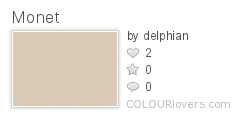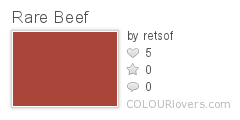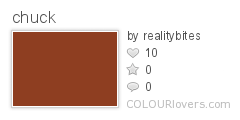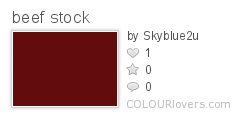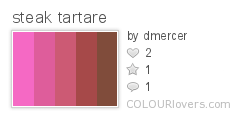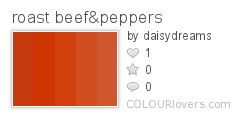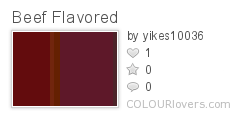We’re fortunate to have guest authors Megan Fizell & Cassandra Edlefsen share their collaborative colour series here on COLOURlovers. Their monthly colour project considers select artworks featuring one predominant colour within the context of the pigment’s history and in relation to natural edible form. Read more about the project at the bottom of this post. You can find the original articles on Feasting on Art. The one below is located here.
In the mid-16th century, Spain began importing a vibrant red pigment from the New World that was so highly sought after that the source was held as a national secret. The dye was extracted from the blood of a female cochineal, a wingless insect that lives upon the leaves of the prickly pear. The dye was so valued that in the late 18th century, a French spy by the name of Nicolas Joseph Thierry de Menonville, snuck into the Spanish territory and successively procured a living specimen. The cochineal insect is closely related to the Indo-European kermes bug. Kermes insects live upon the scarlet oak and the red dye they produce was the most expensive pigment in the middle ages and very valuable to the Romans. According to Victoria Finlay, author of Colour: travels through the paintbox, “for many cultures red is both death and life – a beautiful and terrible paradox.” The connotations this colour, often made from the blood of insects, is embodied in Claude Monet’s Still Life: Quarter of Beef. This painting of a dead animal is created – is given life – through the death of the cochineal insect; yet represents a food source that sustains life. The small canvas represents the cyclical and paradoxical nature of the colour red.

[Claude Monet, Still Life: Quarter of Beef (Nature morte : le quartier de viande vers), c.1864
oil on canvas, 24 x 33 cm, Musée d’Orsay, Paris]
As a leading artist within the Impressionist movement, Claude Monet’s paintings are associated with dreamy landscapes and pastel colours. Before his redundant paintings of haystacks, churches and waterlilies, his work was closer in appearance to his contemporary, Gustav Courbet, whose Realist manner was concerned with the common ‘plebeian’ life. The cut of beef depicted in Monet’s Still Life: Quarter of Beef is an inexpensive and tough piece, typically consumed by the lower class. The garlic would be used to flavour the meal – perhaps in a stew – and the earthenware jug confirms the working-class nature of the tableau. To mimic the paradoxical nature of the colour red, the painting of a plebeian meal is paired with a quintessentially posh recipe for steak tartare. The dish was served in the early 20th century under the name of steak à l’Americane without the egg yolk (also left out of my recipe) and with a side of tartare sauce. Over time, the fare evolved to become an assemblage of raw, minced (not ground) beef, season and topped with a raw egg yolk. Typically the beef is marinated in citrus juice, a Mexican technique that begins to cook the meat and kill off any bacteria. Steak tartare can be served with a variety of accompaniments, a number of which are suggested below.

{Steak Tartare}
adapted from French by Damien Pignolet
serves 2
1 c lean rump, trimmed of sinew
½ lemon, juiced
few splashes of Tabasco sauce
1 tsp Worcestershire sauce
drizzle of olive oil
1 tsp lemon zest
1 TB chives
½ tsp sea salt
½ tsp black pepper

Inspired Color
![]()
The Project
The colour of a food or dish plays an important role in its appeal. Before tasting a tomato, we know that if it is green, it is unripe. These inherent expectations of the natural colouration of the world around us present an interesting challenge to artists. To represent skin tones in a portrait or the light hitting the flesh of a lemon, the right combination of colours must be mixed to determine the appropriate colour recipe for each painting. Some artists disregarded the traditional mode of colour representation and beginning with the Impressionists, colour was used to communicate emotion and highlight ephemeral experience. Colour has since been utilized as both form and symbol, as means for subjective expression, as a conceptual model and even to evoke realms of contemplation.
The monthly colour project considers select artworks featuring one predominant colour within the context of the pigment’s history and in relation to natural edible form. By coupling the art with a colour-specific recipe, we continue to investigate the properties of the colour of food in both their raw and cooked states. Each colour will be broken into two parallel posts, the first featuring a still life painting of food with a literal recipe translation and the second a work that capitalises upon the emotive qualities of the pigment with a conceptual recipe inspired by the mark-making technique.

